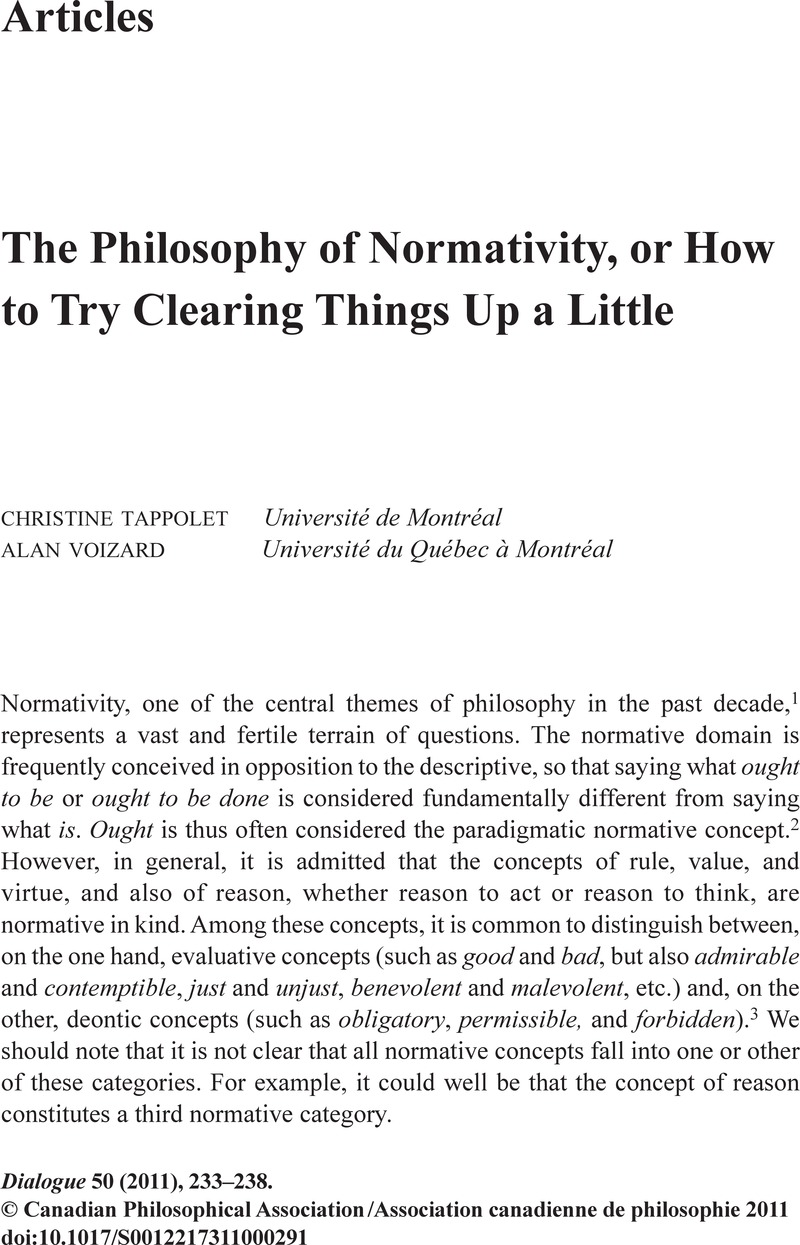No CrossRef data available.
Article contents
The Philosophy of Normativity, or How to Try Clearing Things Up a Little
Published online by Cambridge University Press: 21 October 2011
Abstract

- Type
- Articles
- Information
- Copyright
- Copyright © Canadian Philosophical Association 2011
References
Notes
1 For evidence of this, here are the titles of an impressive number of works that make direct reference to it: Dancy 2000; Copp 2001; Tappolet & Weinstock 2001; Schaber 2004; Wallace 2005; Hattiangadi 2007; Wedgwood 2007; Cuneo 2007; Thomson 2008; Robertson 2009; Greco 2010; De Caro & Macarthur 2010; as well as Korsgaard 1996, which one could say started a trend.
2 The term “norm” is borrowed from the Latin term norma, which means set square, but also rule or law, and which itself is derived from the Greek, gnomon, which also means set square.
3 For the distinction between the evaluative and the deontic, see Ogien and Tappolet 2009 and Tappolet 2011.
4 Among those who subscribe to one form or another of internalism we find Hare 1952, Davidson 1986, Smith 1994, Korsgaard 1996 and Wedgwood 2007. On the externalist side, there is Railton 1986, Brink 1997, Copp 1997, Svavarsdottir 1999 and Shafer-Landau 2003.
5 Utilitarianism, 1963, chap. 3.
6 See, among others, Sidgwick 1907; Moore 1922; Hare 1952, and Smith 1994.
7 Hume, Treatise of Human Nature, 1739-1740.
8 Kant, Groundwork of the Metaphysics of Morals, 1785.


